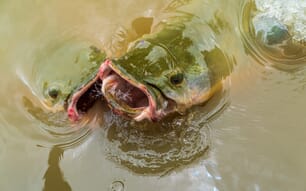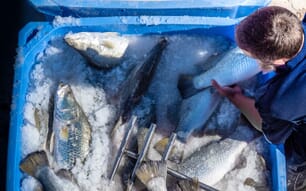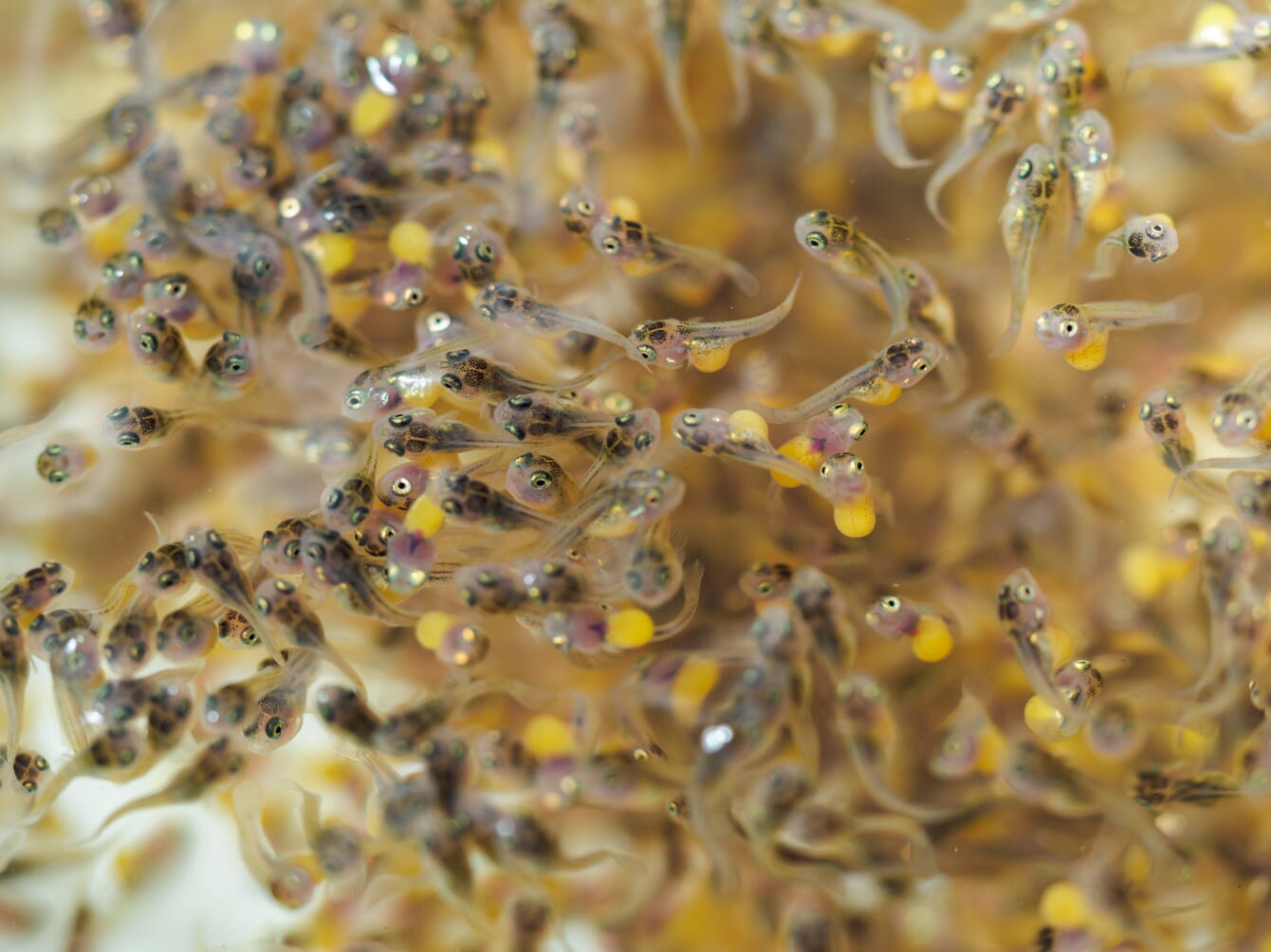
Unlike some species, tilapia fry have a broad window of availability throughout the year
In times of highly challenging economic conditions, many aquaculture producers may benefit from an analysis of their operations through an “agro-industrial” perspective. Agro-industries fundamentally transform agricultural raw materials into marketable products, and many aquaculture enterprises fit the concept of agro-industry more than you might think. In these businesses, raw materials such as feed and fingerlings are transformed into value-added products, be they living organisms or fresh fillets. And whether one considers aquaculture operations or more traditional agro-industries, as a rule the more complex the process, the greater the requirements for capital, technology and management.
Effective evaluation of agro-industrial enterprises requires the incorporation of elements from both agricultural and manufacturing analysis. Many established aquaculture businesses include production, transport, distribution and marketing activities to varying degrees, but the primary focus is ultimately the value-added transformation of inputs. Accordingly, traditional agro-industrial analysis focuses on the transformation (production) process, and on associated procurement and marketing activities. This approach to operational assessment can benefit many aquaculture enterprises, especially in response to currently prevailing market conditions.
Traditional agro-industries are quite varied, but many of us are familiar with at least a few of them. Examples include pencil manufacturing, sugar mills, facilities for cleaning and packaging fresh vegetables, potato storage and packing houses and poultry production and processing. To varying degrees, the raw materials agro-industries must transform exhibit seasonality, perishability and variability in quality.
In contrast, the finished products they market are subject to more constant demand and a need for consistency. In spite of their differences, all share a number of common characteristics, and these result in fundamental differences between agro-industry and traditional manufacturing. They also create greater challenges in terms of inventory management, balancing supply and demand, scheduling production and coordinating internal acquisition, process and marketing activities.
An entire discipline has evolved over the past five decades to facilitate the planning, analysis and evaluation of agro-industries (Austin 1981, UNIDO 2022). Yet, while many institutions of higher education throughout the world train professionals with industrial or agricultural expertise, very few graduate with both. Many aquaculture enterprises have failed as a result of inadequate planning and analysis, but many others can avoid such a fate by applying agro-industrial management approaches.
Many aquaculture businesses incorporate features typical of agro-industries. Some are obvious, especially with regard to seasonality of inputs for certain species. In many cases, fry and/or fingerlings are available for only a short period of time each year during a seasonal spawning period. Production processes, storage facilities and scheduling must be designed accordingly.
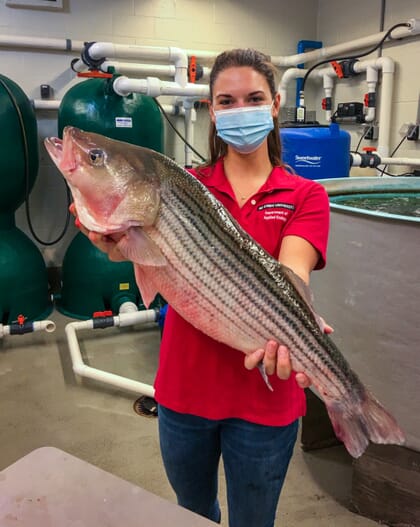
Fingerlings from hybrid striped bass are only available during a two to three month period each year © StriperHub
Some examples from North America include the production of hybrid striped bass and channel catfish hybrids. Fingerlings from these artificial crosses are only available during a two to three month period each year, and from that point forward the production (transformation) process must be adapted to allow for more continuous output.
Perishability issues that are typical of many agro-industries are also frequently encountered in aquaculture operations. Storage space is often limited and critical inputs such as feed and fingerlings must be considered highly perishable. As is the case with many agro-industries, inputs are also often highly variable. Examples include feed quality and/or palatability, fingerling size and health status, chemical profiles of well water supplies and chlorine/chloramine content of municipal water supplies, to list just a few. In many aquaculture facilities around the world, even energy supplies must be considered somewhat variable, necessitating on-site generators and switching systems.
There are also some occasional differences between production aquaculture and the general agro-industry model, but the approach to analysis need not vary. Raw materials are typically the most important cost components of agro-industries, but they may be partially eclipsed in some aquaculture enterprises by cost factors such as labour, energy, liquid oxygen, interest on borrowed capital and insurance.
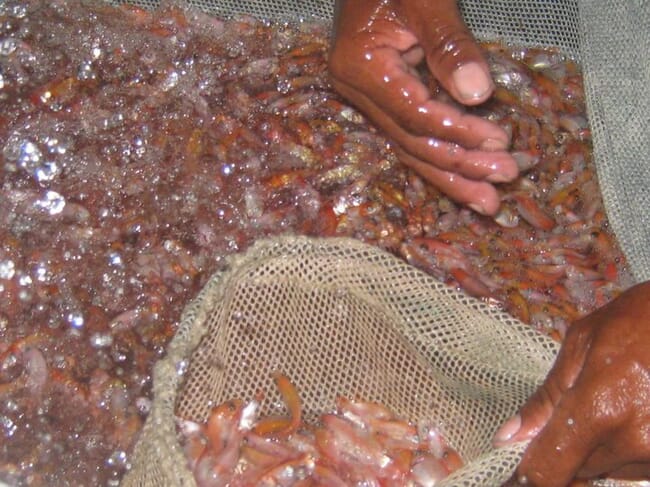
Tilapia fingerlings can usually be produced year-round, but quality can vary significantly among suppliers © C Greg Lutz
Agro-industries are also somewhat unique in their dependence on a number of distinct economic sectors. These usually include everything from agricultural inputs to service industries, utilities and distribution enterprises. Each of these dependencies results in the potential for interruptions in day-to-day operations. Planning and management can be extremely challenging because less-standardised inputs result in additional pressure on production scheduling, cash flow and quality control than in traditional manufacturing. This is the reality for most aquaculture businesses as well.
As mentioned above, agro-industrial analysis focuses on the transformation process, and associated procurement and marketing activities. While the transformation (production) process varies tremendously among aquaculture businesses, some discussion regarding procurement and marketing will be useful.
Procurement
There are a number of factors to consider in analysis of procurement activities. These include quantity (availability) at the time of each purchase, quality variations, timing (seasonality, perishability, and lead time required to secure key inputs), cost determinants and pricing, and organisation of the procurement system. For an aquaculture enterprise, appropriate questions might include:
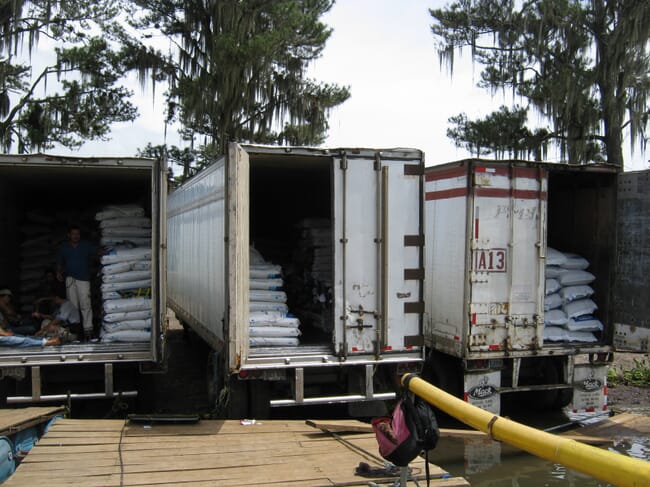
When only one or two feed suppliers are available nearby, dependence becomes an important consideration © C Greg Lutz
1) Who are the key suppliers for any particular input?
If fry or fingerlings (or PLs or spat) must be purchased on the open market this becomes a critical consideration. This is equally important for feed requirements.
2) What have the production capacities of these key suppliers been over the past 5-10 years?
Will competition from other producers for inputs such as fingerlings and specialty feeds impact their availability or prices, now or in the near future? Supply variations in key inputs must be documented and major causes for such variations must be identified.
3) What, if any, problems have these feed and seed producers experienced historically?
In some instances, suppliers may not be able to meet their obligations due to unforeseen problems, inadequate facilities or poor management. A fingerling supplier that has suffered from poor spawning success in three of the past five years may not be a reliable choice for a long-term contractual arrangement. Similarly, a feed supplier that has inconsistent access to ration components such as fish meal may be a liability, even if they offer competitive pricing.
4) What are the suppliers’ business plans for the next several years?
Is retirement, a sale to new owners or a shift to an alternative species being planned? If a tilapia fingerling supplier intends to convert entirely to yellow perch and hybrid bluegill, or Clarias catfish, their tilapia-producing customers may have limited alternatives.
5) Who are the other major customers (competing users) relying on the same input suppliers?
Are they planning to expand and thereby present a more competitive account for key inputs such as feed or fingerlings? Or are they planning to end operations soon and thereby reduce demand to the point where the suppliers’ businesses become unprofitable? Either situation will require some proactive adjustments.
Some aquaculture operations have few options with regard to key suppliers, but many have access to multiple vendors. Never become complacent with the current supply chain. In terms of quality of inputs, key considerations for fry or fingerlings should include size, availability, uniformity, health status, genetic background (performance), colouration, supplier handling and transport practices and adaptability to the production system (process) in question.
For feeds, palatability, ingredients (digestibility), consistency, fines content and storage features (perishability) are all important characteristics. Some feed suppliers using least cost formulations are forced to adapt their components on a weekly basis, resulting in inconsistent palatability and reduced feeding activity. As mentioned previously, feed is a perishable input, so emphasis should also be placed on regular feed availability and rapid delivery to avoid the need for extensive or prolonged on-site storage. Superior performance can justify increased costs in some cases.
To a certain extent, the quality of inputs such as feed and fingerlings must reflect market demands. Some examples from consumers in various countries include use of hormone-free fingerlings, “organic” feed formulations, or particular colouration in finished products, be they whole fish or fillets.

Feed quality, availability and consistency are often as important as feed cost © C Greg Lutz
Seasonality, while less of a consideration for feed inputs, can be especially important in the procurement of fingerlings. Health status and transport stress of fry and fingerlings upon delivery become even more important under conditions wherein they must be held back for several months prior to grow-out. Identification of suppliers willing to expand the period of availability for appropriately-sized fingerlings can be a high priority for many aquaculture facilities.
An evaluation of the fry/fingerling market structure deserves special consideration in many grow-out operations. Numbers of competing producers, their production capacities and their transport capabilities must all be determined, as well as their locations – not only in relation to the supplier facility in question but also to other, competing users. Competitive pressures, or emerging opportunities, may result in individual operations ceasing to produce the particular species being sought.
Ownership patterns are also important indicators of the stability of key suppliers, and should be scrutinised. Examine the flow of fry/fingerlings of the species in question from hatchery producers to grow-out facilities to determine centres of power in the procurement system. Power among individual entities at each step of the procurement pathway is indicated by both volume handled and margins realised between suppliers and purchasers (Austin, 1981).
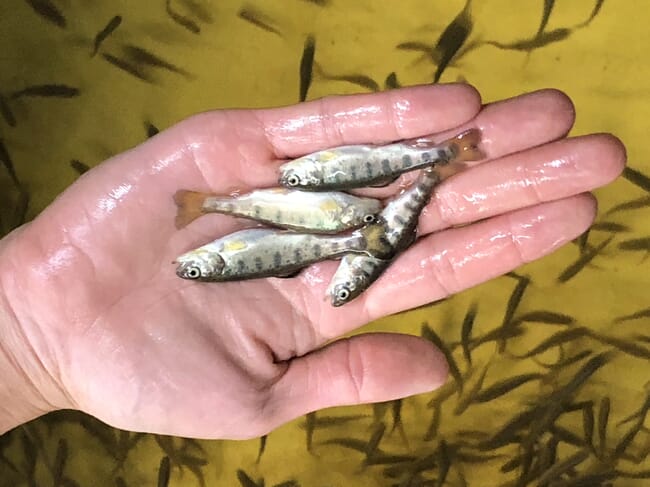
Uniformity and health status should figure into the choice of fingerling suppliers © Emma Mackaskill
Markets and marketing
While analysis should be undertaken to estimate costs associated with procurement and transformation (production) processes, any aquaculture enterprise must rely on an up-to-date market analysis and marketing plan. There is a fascination with production technology among many aquaculturists that blinds them to the more basic requirement for any agro-industry: to sell a transformed, value-added product at a price that allows both financial and economic sustainability.
Many producers have been forced to seek out new markets and new customers in recent months. Marketing analysis must take into consideration customer attributes and the competitive environment (Shaw, 1990), both of which are constantly evolving. Potential customers must be defined in terms of how they might decide to purchase the proposed product – be it live fish or processed fillets – and when, where, in what quantities and how often they would be likely to make such a purchase. However, the most fundamental question in a marketing analysis should always be: why? Why would a potential customer purchase the product in question?
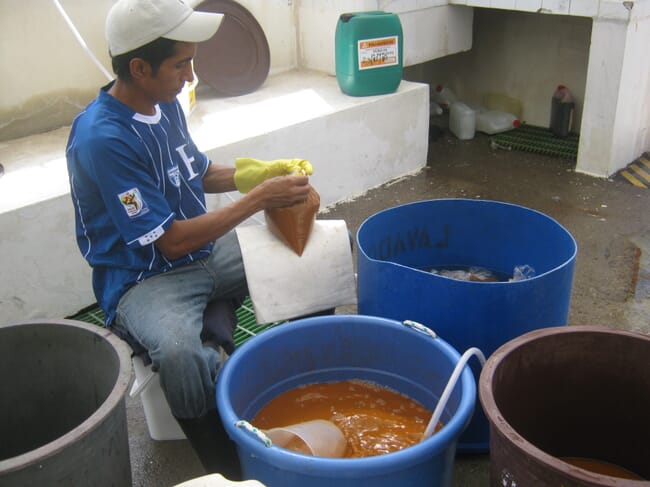
Other key inputs such as Artemia cysts are required in hatchery operations. If unavailable for whatever reason, operations cannot proceed. © C Greg Lutz
Putting the information to work
As we have discussed in this column previously, financial analyses are also required for sound evaluation and economic survival. Once analyses have been completed for the procurement and marketing factors, more traditional approaches such as whole farm budgeting and partial budgeting can be applied to the aquaculture enterprise (Jolly and Clonts, 1993). Financial analyses are generally essential for access to capital, focusing primarily on factors such as return on investment. These analyses, however, can be more effectively developed once procurement and market analyses have been completed. Taken together they can provide important insights into beneficial business strategies that can be applied under trying economic conditions.


